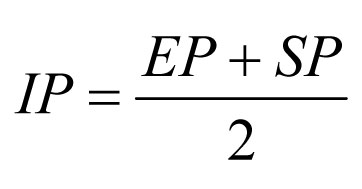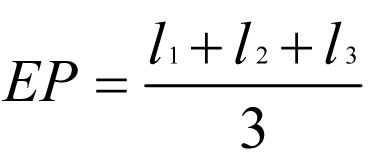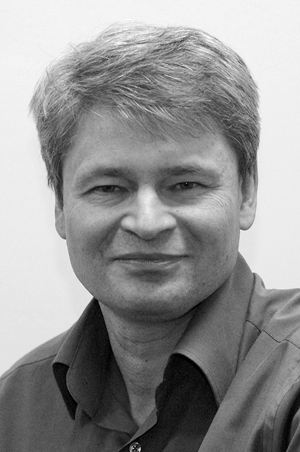Creative Couching in Intellectual Capitalization of Elite Sport
Фотографии:
ˑ:
V.I. Grigor’ev, professor, Dr.Hab.
St. Petersburg State University of Economics, St. Petersburg
V.O. Piskun, professor, Ph.D.
St. Petersburg State Polytechnic University, St. Petersburg
Key words: creative coaching, taxonomic structure, pattern, educational technology, innovation and creative potential, coaching positions, creative workshops.
The relevance of considering the problem of using the principles of creative coaching in training of elite athletes is stipulated by the need to move from traditional to innovation development, reconsider traditional approaches to training of sports reserve, change from linear to multivariate forms of organization of the training process. The growth of scientific and practical interest in creative coaching sets the problems of a higher level - to achieve competitive advantages at the global level. No coincidence they are positioned in the "Strategy of development of physical culture and sport in the Russian Federation till 2020" and in the state program "Development of Physical Culture and Sport" [1, 2]. As you can see, the proposed approach takes on its certain forms, satisfying the challenge: globalization process, reduction of traditional resource development, establishment of a common information space and strengthening of competitive relations.
The purpose of the present study was to consider the potential of creative coaching for the formation of high professional competency, creativity, social mobility of athletes, combining physical, intellectual and spiritual foundations.
Materials and methods. The methods of formal logic, perceptual and semantic analysis and synthesis were used to justify the creative direction of development of elite sport.
Results and discussion. In modern sport high demands are placed on the level of the innovation and creative component of coaching, its scientific support. Creativity and new knowledge implemented in practice are becoming the norm for the organization of training of elite athletes. This applies to all aspects of innovation and creative activity: search for new ideas, development and implementation of innovative training technologies, specific organization of training.
The solution of this problem seems to be possible in case of the integration of the technologies of creative coaching (Engl. coaching – instruct), a system of principles and techniques that contribute to the development and realization of personal potential in competitions, into the training process [3]. Basing on the interdisciplinary theories of systems, synergetics and structuralism, creative coaching can be considered as an educational technology converting the training process from the problem zone into the zone of effective solutions. Here we consider working out a pattern that will be a model for solving similar problems in the coming years. Training sessions serve as a study, a discussion and a game (the guideline “do it as no one has taught you” is being formed). And it should be noted that the fundamental difference of creative coaching from traditional methods of managing the training of elite athletes is in the fact that a coach just helps an athlete to find his own solution to the problem rather than solves it instead of him. Actually, a coach helps to determine an exact balance of two principles: the principle of awareness (willingness to get to the essence) and the principle of personal responsibility (striving for maximum result) for the results of training [4].
The information component of training is highly informative and has all the necessary and sufficient information for making scientific, educational and managerial decisions at any level. During training science represents a continuous flow of innovations, and the general trend in the development of science is the technologization and instrumentalization of scientific thinking. There is a clear relationship between the components of the new type of training athletes, knowledge – creativity – innovations, being implemented at three levels:
1) cognitive level (knowledge, imagination, reflection);
2) emotional level (empathy, identification with an object);
3) motor-behavioral level (transformation of an object or oneself through a complex of own actions).
The innovation and creative direction of the development of elite sport is a succession of innovations implemented and formation of a system of factors and conditions necessary for its fulfillment. Training of athletes gets polycode, aimed at changing the structure and form of the activity consciousness; as a result, athletes acquire the ability to think and act creatively. This ability is functional and instrumental by its nature and it is based on a pyramid of logical levels of managerial activity and principles focused on diversifying the behavioral range, development of personality potential and ultimate realization of preparedness in competitions.
The above characteristics enable to position creative coaching as a project design for creative personality development, opening the prospects for forecasting and step-by-step achievement of top sports skills in view of a number of coaching positions:
– goals and objectives of creative coaching in their hierarchical and dynamic diversity;
– conditions of sport activity of athletes, situational combinations of these conditions which form the subject field of activity;
– methods of activity necessary to achieve the goals of creative training sessions.
Each coaching position is full of causative meanings which provide an informative increment and information density. Each coaching position has several code systems, each of which is concealed within another one. The process of creative conceptual derivation is fulfilled when the qualifying function is implemented. Therefore, the main resource of creative coaching as a way of organizing of athletes’ training consists in creating specific management capabilities. The generated system effects promote the personality restructuring and personality formation and increase athletes’ capabilities for self-actualization and achievement of a high level of sports skills.
Effective use of the innovation potential makes possible the transition from a latent possibility to reality, i.e. from one state to another. Here the inevitable complication of the training process and a multiple choice of solutions to tasks, due to the diversity of parametric uncertainty of training, give rise to the problem of analyzing the stability and quality of sports training.
The strategic direction of improving athletes’ training is a model of a new creative man (homo creator) whose creativity is made of competency, ability to think creatively and motivation [5]. According to our observations, the coaches who combine creativity, flexibility, communicability and ability to build relationships with athletes work most efficiently. The success of athletes’ training is determined by their ability to set goals and achieve them step-by-step, and to solve unconventional tasks. This extraordinariness reveals the new role of coach’s work, its immanent and existential nature. It has a phenomenological origin and applies to the diversity of sports activities, and a new reality of managing athletes’ training is created. The explanation of this phenomenon is based on the understanding that the formation of the creative vector of development is aimed at the integrated solution of closely related tasks: enhancing educational functions, reducing the entropy of training, expanding the range of athletes’ independent activities.
The tasks associated with the implementation of the functional technology of creative personality formation and the employment of mobilization mechanisms of enhancement of sports skills come to the forefront of the coaching position. The creative trainings comprise:
- decision making (selection of the most appropriate work method, corresponding to athlete’s abilities, from a number of alternative ones);
- forecast (determination of the probability of a creative problem solving);
- planning (identifying resources to solve a creative problem, making a taxonomic model);
- programming (a procedural and algorithmic regulation aimed at the transition to a higher level of sports skills, individual training plan);
- semantic design (selection of the strategy of creative task solving: hierarchy of objectives, means and methods aimed at correcting the established dynamic stereotypes of sports activity, an analysis of success (failure) in the competitive activity).
The technological basis of the formation of the innovation and creative potential (ICP) of elite sport should be defined within the issue mentioned above. The ICP structure consists of information technologies, cognitive sciences, nanotechnologies and biotechnologies. This information field is regarded as a target structure of priorities of formation of ICP technological platforms in elite sport. A special innovative environment is formed here, that promotes an increase of its competitiveness. Therefore, the selected nodes (nano-bio-info-cogn) should be the center of attraction of research programs and applied research and development works, as they are a promising configuration, have pronounced synergy and correspond to long-term development goals.
In the international practice, the following methods of assessing the ICP level are accepted. The intellectual potential index (IP) in elite sport is used as an indicator; this index is determined by the following formula 1:
 (1)
(1)
where IP is the integral index;
EP is the educational potential of sport;
SP is the scientific potential.
The educational potential of sport is determined by the formula (2):
 (2)
(2)
where EP is the educational potential;
l 1 is athletes’ intelligence level;
l 2 is athletes’ qualification level;
l 3 is the share of expenses for research and development.
Creativity becomes more important than the ability to comply with conventional thinking. The expected result of creativity is enhancement of efficiency of athletes’ training, that can be manifested both directly (e.g., increase of athletes’ adaptation reserves with regard to competitive load, competitive reliability improvement) and indirectly (e.g., increase in the rate of adaptation to load). In this result, the perceivable process of the undulating progress of rising quantities in reaching the top levels of sports skills is fulfilled, contributing to a strong and sustained motivation to achieve the best sports results.
The ability to generate original ideas, techniques and technologies, models, and coach’s skill to combine existing technologies in a new way are revealed in managing the training of elite athletes. What is brought to the forefront in this approach is not the possession of knowledge in general, but the ability to create new knowledge; in other words, there is a need not for just “knowledgeable” specialists, but those having certain key competences. In this regard, the training gains a sustainable innovative development as a result of putting into practice system innovations and conditions for using them.
Conclusions. The results of the study suggest that thanks to using the principles of creative coaching cognitive structures are generated, which are in close correlation with effectiveness of management of athletes' training. Emergent signs of the synergistic discourse are displayed in it: the conjugation with the culturological intension of elite sport; increment of its energy potential; cultural and historical communications arising in the genesis of its development. The process of cognitive conceptual derivation in sport is carried out along with the implementation of the qualifying function, taking in its context new information units [6].
Creative training is aimed at the development of the taxonomic structure of motor task solution, which reflects the functionality of interrelations between the following components:
– the development of a structural model of motor action;
– the objectivity of a creative solution for the problem;
– a formal logical analysis of the problem solving situation;
– the determination of operational meaning (tools and methods) of the problem;
– the specification of target goals (goals-introjections) of training.
When developing such a taxonomic structure, one should focus on the biomechanical (normative) models describing the structural scheme and mechanisms of action: motor structure (subsystems of the levels of certain blocks – articular movements, elementary actions), structure of the system of movements (biodynamic, psychological and information links), system (emergent, synergistic) properties, which form the qualitative determinacy of motor actions, given by operational objectives.
The proposed contextually and situationally conditioned approach structures the knowledge on creative training of athletes and fixes the interrelations between the training technologies used and the dynamics of sports skills enhancement. Combining science and the process of generation of ideas with the possibilities of information technology brings the problem of enhancement of the efficiency of athletes’ training to a qualitatively new level. Today the creative vector of development is becoming a self-sufficient alternative reality in the training of qualified athletes, promoting the development and implementation of personality potential in competitions. Hence, it is no exaggeration to say that the use of creative technologies is a strategic resource for enhancing the effectiveness of athletes’ training, so it can be considered as a new synthetic interdisciplinary direction in the sports theory.
References
- The strategy of development of physical culture and sport in the Russian Federation till 2020, approved by the decree of the Federal Government August 7 2009 № 1101-р. [Electronic resource]. URL: http://www.infosport.ru›strategiya/ (In Russian)
- The State Program of the Russian Federation "Development of physical culture and sport" – [Electronic resource]. – URL: http://www.gosprogrammy.gov.ru (In Russian)
- Downey, Miles. Effective coaching. Lessons from the coach's coach / Miles Downey. – Moscow: Dobraya kniga, 2005. (In Russian)
- Alan J. Rowe. Creative thinking / Alan J. Rowe / Transl. from Engl. by Ostrovsky V.A. – Moscow: NT Press, 2007. (In Russian)
- Meerovich, M. Creative thinking technology / M. Meerovich, L. Shragina. – Moscow: Alpina Business Books, 2008. (In Russian)
- Thorne, S. Coaching: A Guide for coach and manager. – Moscow: Piter, 2004. (In Russian)
Corresponding author: gr-finec2010@yfndex.ru



 Журнал "THEORY AND PRACTICE
Журнал "THEORY AND PRACTICE